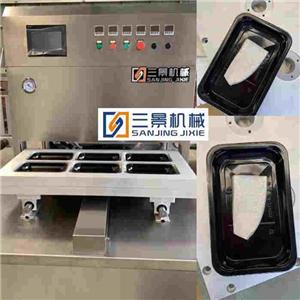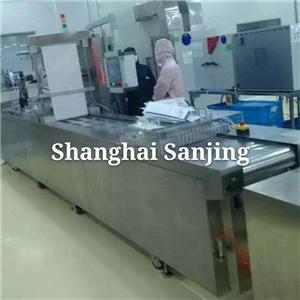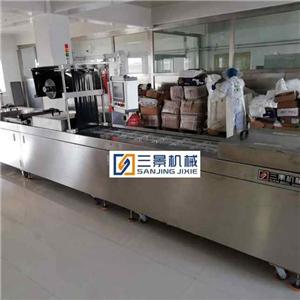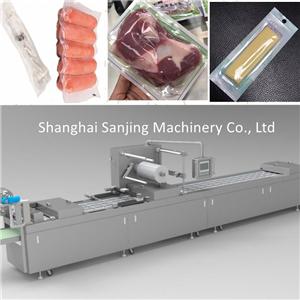Classification of thermal sterilization
Atmospheric pressure humid heat sterilization
It mainly uses water (also used steam) as the heating medium, and the sterilization temperature is 100 or below. It is used for the sterilization of acidic foods or low-acid foods with low sterilization requirements. During sterilization, cans are under atmospheric pressure and are suitable for cans with metal cans, glass bottles and flexible packaging materials as containers. There are intermittent and continuous sterilization equipment.
2. High pressure steam sterilization
Using saturated steam as heating medium, the can is in saturated steam during sterilization, and the sterilization temperature is higher than 100, which is used for sterilization of low acid food. During sterilization, the air in the sterilization equipment must be drained, which is conducive to keeping the temperature consistent. When the sterilization temperature is higher (the tank diameter is above 102mm, or the tank diameter is below 102mm, the temperature is higher than 121.1), the air reverse pressure cooling is generally used during cooling. The sterilization equipment is intermittent and continuous, and the cans are static and rotary in the sterilization equipment. The rotary sterilization equipment can shorten the sterilization time.
3. High pressure water cooking and sterilization
Using water under air pressure as heating medium, the sterilization temperature is higher than 100. it is mainly used for sterilization of low acid cans with glass bottles and soft materials as containers. During sterilization (including cooling), the can is immersed in water to make heat transfer uniform and prevent container damage caused by excessive internal and external pressure difference or excessive temperature change. During sterilization, it is necessary to maintain a good circulation of air and water to make the temperature uniform. The sterilization equipment is mainly intermittent, but the can can keep turning during sterilization. When sterilizing soft cans, a special tray (rack) is needed to place the soft cans to facilitate the circulation of the heating medium.
4. Air pressurized steam sterilization
Steam is used as the heating medium, and compressed air is added to the sterilization equipment to increase the external pressure of the tank and reduce the pressure difference between the inside and outside of the tank. It is mainly used for high temperature sterilization of glass bottles and soft cans. The sterilization temperature is above 100 and the sterilization equipment is intermittent. Its control requirements are strict, otherwise it is easy to cause uneven temperature distribution in the sterilization equipment.
5. Flame sterilization
The can is directly heated by flame, which is a kind of high temperature and short-term sterilization under atmospheric pressure. During sterilization, the can is preheated and rolled over the high temperature flame (the temperature is above 1300). It reaches high temperature in a short time and is cooled by water spray after being maintained for a short period of time. The food in the jar does not need soup as a medium for convective heat transfer, and the content is high in solids. However, due to the high internal pressure during sterilization, it is generally only used for small metal cans. The sterilization temperature of this method is difficult to control (generally determined by measuring the heat radiated from cans after adding).
6. Sealed sterilization of hot cans
Is to heat-treat the food before canning, and then immediately seal the food while it is hot, use the waste heat of the food to complete the sterilization of the sealed can or carry out secondary sterilization, and then cool the can after meeting the sterilization requirements. It is mainly used for sterilization of acidic food such as juice sauce. Most of the sterilization equipment is tubular or chip type, which requires a high degree of cleanliness and sterility of the canned container. After sealing, the can is often turned upside down to ensure the sterilization of the can lid.
7. Pre-sterilization aseptic filling
It is to make the food meet the requirements of sterilization in the process of pre-sterilization, then cool to room temperature, put it into a sterilized aseptic container and seal it (seal the jar) in an aseptic state. It is mainly used for sterilization of liquid and semi-liquid food. The pre-sterilization is completed in the heat exchanger and the time is short. Aseptic canning can be completed in aseptic packaging equipment or system, which is a continuous high-temperature short-term or ultra-high temperature instantaneous sterilization method. Suitable for flexible packaging materials and metal and plastic containers.




